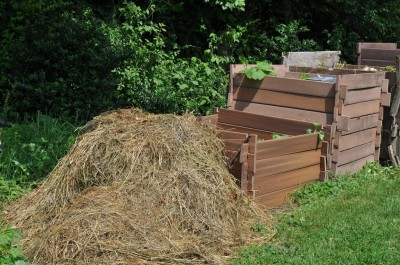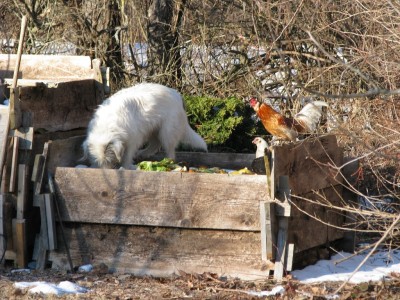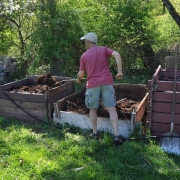YOGI WAS RIGHT
To Do List
“It ain’t over ’til it’s over” said Yogi Berra, and so says I. Yes, the outdoor gardening season is drawing to a close around here, but I have a checklist (in my head) of things to do before finally closing the figurative and literal garden gate.
Trees, shrubs, and woody vines can be planted as long as the ground remains unfrozen. To whit, I lifted a few Belaruskaja black currant bushes from my nursery row and replanted them in the partial shade between pawpaw trees. A Wapanauka grape vine, also in the nursery row, is now where the Dutchess grape — berries too small and with ho-hum flavor — grew a couple of months ago. And today a couple of black tupelos are moving out from the nursery row to the edge of the woods, where their crimson leaves, the first to turn color, can welcome in autumn each year.
Kale, lettuce, endive, turnips, radishes, leeks, and celery still grow in the vegetable garden, but many beds are vacated for the season. Any remaining old plants will become food for the compost pile and the cleared off beds will then get a one-inch dressing of crumbly, brown compost from a pile put together last year.

Freezing weather would burst the filter, pressure regulator, and timer for the drip irrigation system, so these components have been brought indoors. The rest of the system stays in place.
The drip system may now be out of commission but some watering may be needed. Occasional days with bright sunlight and warm mean hand watering. How primitive!
Planning Ahead, Soil-wise
Making compost for use next year, same time, same place, is also on my checklist. Especially today, so the compost creatures within the pile can take advantage of lingering warmth in the air to work overtime. A pile that gets hot cooks to death most weed seeds and pests that hitchhike into the pile on what I throw in. And I throw in everything, in spite of admonitions from “experts” to keep diseased or insect-ridden leaves, stems, or fruits out of compost piles.
So today, after loading horse manure, with wood shavings bedding, into my truck pitchforkful by pitchforkful, I drove home and unloaded everything pitchforkful by pitchforkful into my compost bins. Each bin got a lot more than a restricted diet of just the horse manure mix, though. I alternated layers of manure with mowings scythed from my small hayfield, wetting down each layer well and sprinkling occasional layers with soil, for bulk, and ground limestone, to counteract soil acidity.

Manure is not a necessity for good compost. The manure mostly is for nitrogen, one of the two main foods of compost microorganisms. Some of my piles get that nitrogen from soybean meal, an animal feed usually meant for creatures that you don’t need a microscope to see. Early in the season, young grasses and weeds, which are high in nitrogen, do the same. And truth be told, any pile of plant material, if left long enough, will turn to compost. The nitrogen helps the material chug along faster on its way to compost, and the faster the microbes work, the hotter it gets.
Winter Work for Microbes
I’ll be feeding my last compost pile of the season all winter long. Just a little at a time, mostly scraps and vegetable trimmings from the kitchen with occasional toppings of leftover hay. Adding stuff slowly to a compost pile doesn’t let enough critical mass build up for heat, and especially not in winter’s cold.

No matter. I just let piles that don’t heat up sit longer before I use them. It’s the combination of time and temperature that does in all the bad guys that hitchhike into my compost piles. So 1 hour at 140° F. might have the same deadly effect as a week at 115° F. My hot piles sit for a year before I use them; the cold piles cook longer. It ain’t over ‘til it’s over.



I read the first paragraph or two and thought “damn I wish I were he!” The rest of the entry reminded how much work it is. Still. You’ll live forever and have so many opportunities for delight. Thanks for sharing with us all all these years.
I’m blushing.
Lee:
How what is your opinion on “seaweed’ in the compost pile?
Also “wood ash” in your compost.
Seaweed: excellent material. If from the sea, it might be a good idea to let the rain wash out some of the salt.
Woodash: also good, but don’t use too much. It’s very alkaline.
I have most of my chores done and was waiting for a frost but it never happened. It got down to -30 last night and it’s snowing today. I’ve always been told to wait for a frost before digging up my Canna plants to overwinter in the garage. Not sure if that’s a myth or not-hate to lose my old fashion Cannas because the hummers love them and don’t touch all the fancy new ones out there. It’s going to be messy because we got drenched the other day and the man next door needs to fix his gutter since the end fell off and all the water is pouring out and running over to my garden spot. I told his daughter yesterday and she said he hurt his knee but she would “try” to fix it. I told her I would help once the ground can accept the ladder and maybe it warms up a bit so the adhesive will work. It will benefit me more than them so I volunteered. I thought I was ahead but now I’m behind. The trees are hanging onto those leaves too…I was hoping to rake and shred a lot for my compost. Nature doesn’t care about our schedules for sure.
Hi Lee: I just found you and love to read everything that you teach us. I have started my first, true compost pile. 4’high, 4′ round . I started it 2wks ago and I have all 4 ingredients necessary within. it’s covered with a tarp. Just a few ?’s. How many times during the winter do I need to turn it and how can I decide if it needs watering? I expected it to steam but I’m not there yet. I just read your most recent blog and was surprised to learn that it takes about a year to use the finished product. I live in MA so the winter can get very cold. Any advice would be appreciated. thank you.
My winter composts don’t get hot unless I build a whole pile at once. I only turn the piles once, in spring, to check progress and any needs, such as more aeration or water. I could get the compost finished sooner by turning it sooner, perhaps more than once. But what’s the rush?
Hi, Lee, informative as always; thank you.
Question: what, if any, critters do your winter kitchen scraps invite? And how do you deal with that? We have real bear and other issues here in Mt. Tremper, and they are not true hibernators. And yes, we have a dog.
Much appreciated,
Laila BW
I put my kitchen comost out on the pile in the morning. After the dogs and ducks graze on it, there’s not much calory-rich stuff left to attract other scavengers. Plus, my two dogs live outdooors; a bear would rather go to a neighbor’s than hassle with barking dogs.